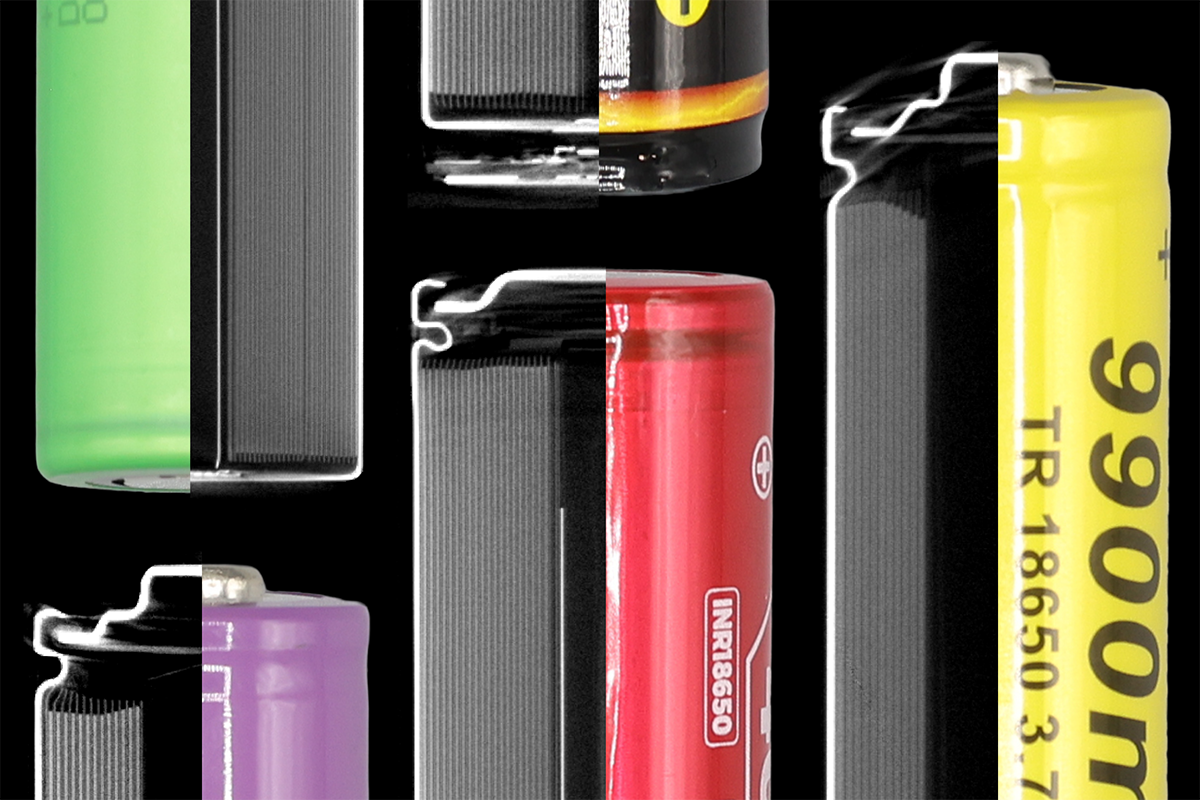Inside Safe and Sane Fireworks
Fireworks are a spectacular display of chemistry and engineering, and with industrial CT, we can see what makes these light shows possible. We grabbed a few “safe and sane” (non-aerial, non-explosive) fireworks and popped them into our Neptune scanner to delve into their internal structures and elemental composition. Let’s take a look.
Bang Snap
Bang Snaps or Pop Pops are small novelty fireworks made with tiny gravel pieces coated in silver fulminate and packaged in cigarette paper crimped at the top into the shape of a cherry. With our Microfocus Neptune, we can see the specks of silver fulminate, which are much denser than the gravel. This density difference is crucial for visualizing the distribution of the reactive material, ensuring the pop pops detonate safely and effectively upon impact.

Explore the scan
Fountain Firework
Our scan shows a clay choke at the top of this fountain firework to help channel the sparks into a single point. The choke has a hole for the fuse to lead into the tightly packed internal chamber of pyrotechnic elements. There are some small gaps between the choke and the fuel grain, which probably isn’t ideal but may not cause major issues. We see that the plastic base is not level with the paper tube, and in Voyager we can even confirm with measurements: on one side it’s an 85° angle, and the other is a 95° angle. This could present a danger if it causes the firework to tip over.

Fountain fireworks contain layers of chemicals such as aluminum powder for bright sparks, strontium nitrate for red flames, and barium nitrate for green flames. In the scan, these likely correspond (a little confusingly) to the different colors on our rainbow color map in order of increasing density: aluminum is blue, strontium nitrate yellow, and barium nitrate red. This particular firework is called a Skittle Stick, and it would be easy to mistake these evenly distributed colorful orbs for the candy. Below the Skittle column is another clay plug to end the detonation.
Explore the scan
Cone Firework
This cone fountain firework is built much the same as the Skittle Stick, but it has a slightly different composition. The fuse leads directly into the fuel grain without a clay choke, though there is a clay plug at the base. Here, the conical shape will do the channeling to create a volcanic effect. We also see a thicker three-layer paper wall to provide rigidity. This one has a large void in the fuel grain, and using Voyager’s automated Porosity Analysis, we can isolate and measure it: 4.29 mm³. This empty spot may cause a disappointing delay during the light show.

Explore the scan
Elements of fireworks
This Periodic Table of Firework Colors below highlights the elements used to create the vivid colors in fireworks. Elements like strontium (red), barium (green), and copper (blue) are crucial for producing specific hues. Their position on the periodic table corresponds to their atomic structure and density, which affects X-ray attenuation. Higher density elements like silver, antimony, and barium attenuate more X-rays, standing out starkly against low-density materials in CT scans.

CT scans provide valuable insights into the internal structures of fireworks, helping manufacturers ensure the quality and safety of their products. Beyond fireworks, industrial CT can be applied to a broad range of energetics, from automotive airbags to aerospace pyrotechnics, addressing critical inspection needs and enhancing overall safety and reliability.
Download our free white paper to learn more about how industrial CT can advance the safety and performance of energetics.







.png)


.png)
.png)